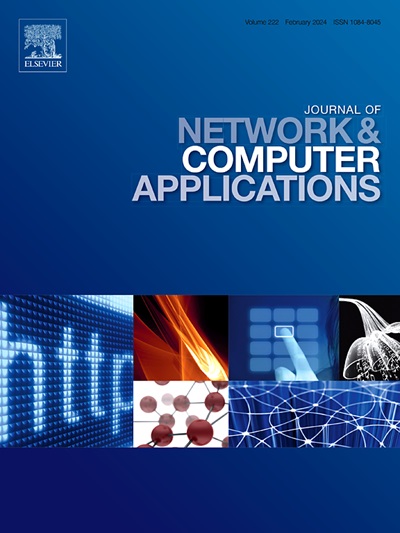Heterogeneous graph representation learning via mutual information estimation for fraud detection
IF 7.7
2区 计算机科学
Q1 COMPUTER SCIENCE, HARDWARE & ARCHITECTURE
引用次数: 0
Abstract
In the fraud detection, fraudsters frequently engage with numerous benign users to disguise their activities. Consequently, the fraud graph exhibits not only homogeneous connections between the fraudsters and the same labeled nodes, but also heterogeneous connections, where fraudsters interact with the legitimate nodes. Heterogeneous graph representation learning aims at extracting the structural and semantic information and embed it into the low-dimensional node representation. Recently, maximizing the mutual information between the local node embedding and the summary representation has achieved the promising results on node classification tasks. However, existing deep graph infomax methods still have the following limitations. Firstly, attribute information of nodes in the graph is not fully utilized for capturing the semantic relationships between nodes. Secondly, the local and global supervision signal are not simultaneously exploited for the node embedding learning. Thirdly, the multiplex heterogeneous relations among nodes are ignored. To address these issues, a heterogeneous graph representation learning model by mutual information estimation (MIE-HetGRL) is proposed in this paper to identify the fraudsters in the fraud review graph. Concretely, a high-order mutual information estimation is proposed to integrate the local and global mutual information as the supervision signal. Then we devise a semantic attention fusion module to aggregate the relation-aware node embeddings into a compact node representation. Finally, a joint contrastive learning is designed for facilitating the training and optimization of model. The experimental results show that our proposed model significantly outperforms state-of-the-art baselines for fraud detection.
基于互信息估计的异构图表示学习用于欺诈检测
在欺诈检测中,欺诈者经常与众多良性用户进行接触,以掩盖其活动。因此,欺诈图不仅显示了欺诈者与相同标记节点之间的同质连接,而且还显示了欺诈者与合法节点交互的异质连接。异构图表示学习的目的是提取图的结构和语义信息,并将其嵌入到低维节点表示中。近年来,最大化局部节点嵌入与摘要表示之间的互信息在节点分类任务中取得了很好的效果。然而,现有的深度图信息集方法仍然存在以下局限性。首先,没有充分利用图中节点的属性信息来捕捉节点之间的语义关系。其次,节点嵌入学习没有同时利用局部和全局监督信号。第三,忽略了节点间的多重异构关系。为了解决这些问题,本文提出了一种基于互信息估计的异构图表示学习模型(ie - hetgrl)来识别欺诈审查图中的欺诈者。具体而言,提出了一种高阶互信息估计方法,将局部互信息与全局互信息相结合作为监督信号。然后,我们设计了一个语义关注融合模块,将关系感知节点嵌入聚合成一个紧凑的节点表示。最后,为了便于模型的训练和优化,设计了一种联合对比学习。实验结果表明,我们提出的模型明显优于最先进的欺诈检测基线。
本文章由计算机程序翻译,如有差异,请以英文原文为准。
求助全文
约1分钟内获得全文
求助全文
来源期刊

Journal of Network and Computer Applications
工程技术-计算机:跨学科应用
CiteScore
21.50
自引率
3.40%
发文量
142
审稿时长
37 days
期刊介绍:
The Journal of Network and Computer Applications welcomes research contributions, surveys, and notes in all areas relating to computer networks and applications thereof. Sample topics include new design techniques, interesting or novel applications, components or standards; computer networks with tools such as WWW; emerging standards for internet protocols; Wireless networks; Mobile Computing; emerging computing models such as cloud computing, grid computing; applications of networked systems for remote collaboration and telemedicine, etc. The journal is abstracted and indexed in Scopus, Engineering Index, Web of Science, Science Citation Index Expanded and INSPEC.
 求助内容:
求助内容: 应助结果提醒方式:
应助结果提醒方式:


